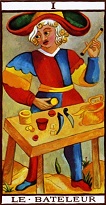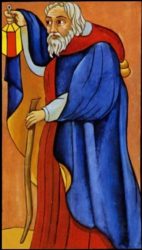
The Multiple States of the Being is Rene Guenon‘s fundamental work on metaphysics. In it he explains that “just as Unity (Being) is nothing but the metaphysical Zero (Non-Being) affirmed, the word is silence expressed.” That is, Silence contains within itself the possibility of the Word.
But the Silence is more than the word. The latter is silence expressed, but Silence must needs include as well the inexpressible. Hence, Silence is related to mystery, which refers to something inexpressible, not incomprehensible (which is a common misconception). The implication here is that the understanding of a mystery requires intuition, a direct knowing of the inexpressible; what can be expressed can, on the other hand, be known through discursive thought.
Guenon makes some interesting etymological connections. The Greek mysterion derives from myein which means “to be silent”. The same root mu in Latin is used in mutus, “mute”, but more significantly in the word mythos, “myth”. So a myth refers to that which is inexpressible, that is, something that can only be expressed indirectly by means of symbolic representations.
In Meditations on the Tarot, this Silence is related to concentration without effort. To know this Silence is to be this Silence. That is, the discursive mind is quieted of its thoughts, images, desires. This is a concentration, not of something, but the effortless concentration of the Silence. We read there:
Concentration without effort, which means there is nothing to suppress and where contemplation becomes as natural as breathing and the beating of the heart, is the state of consciousness — of the intellect, the imagination, the feelings, and the will — a state of perfect calm, accompanied by the complete relaxation of the nerves and muscles of the body. It is the deep silence of desires, concerns, imagination, memory, and discursive thought. We would say that the entire being has become like the surface of calm waters reflecting the immense presence of the starry sky and its inexpressible harmony. And the waters are deep, oh how deep! And the silence increases, always increasing, what SILENCE! Its growth takes place in regular waves which pass, one after the other, through your being: one wave of silence followed by another wave of deeper silence, then yet another wave of even deeper silence … Have you ever drunk the silence. If so, you know what concentration without effort it.
